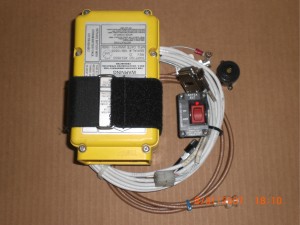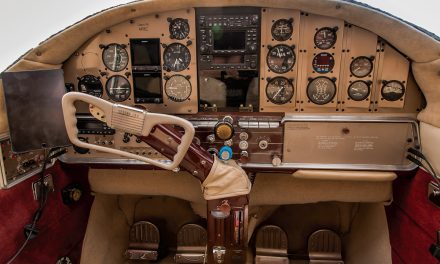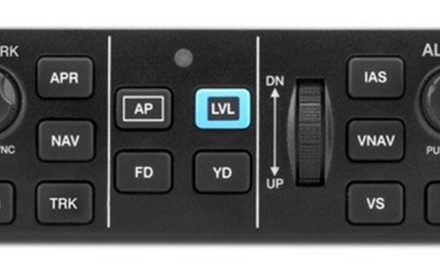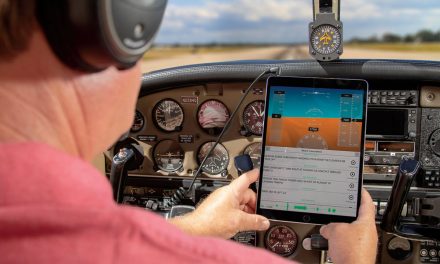 By Bob Hart – www.AvionixHelp.com
By Bob Hart – www.AvionixHelp.com
This article was written in 2015
If you fly and own an aircraft, I bet you have an avionics “wish list.” Unless you’ve got all the latest and greatest in your “bug-banger,” there’s a good chance you have your eyes on something that you believe will make flying easier and, hopefully, safer. However, since flying and private ownership has become more of a financial challenge in the last 20 years, money for such items is likely depleting and that list may now be smaller than it once was.
I don’t know about you, but when I spend money on anything, I like to see it, feel it, use it, and enjoy its benefits. When you buy an ELT, however, they don’t allow you to do this. Instead, they “hide” in the tails of our airplanes and, every so often, send us a bill for a new battery. In short, ELTs are frequently very low on most pilots’ wish lists. We take them for granted and hope that in the event of the need, they’ll give back the original $200-or-so investment we made.
As I say this, two facts really jump out at me:
First, 30-70% of ELTs fail to do their job when needed! We’ll talk about this.
Second, $200 is a very weak investment in your life and the lives of your passengers, who are, quite often, your family!
Sometime around 1970, it became mandatory for most U.S. civilian aircraft to have an ELT onboard. The industry knew something like this was needed, but, sadly, it wasn’t until two prominent politicians in a Cessna 310 disappeared on a flight between Anchorage and Juneau that congress prompted the FAA to mandate the addition of 121.5 locator beacons in aircraft. The 310 was never found. This gives me an idea: Let’s put all 535 members of Congress on an A380 and do some ELT “testing?” I know that’s not very nice—and no way to treat a perfectly good airplane. Sorry, I digress!
The fact is, the 121.5/243 ELT has had a checkered past. Yes, it has saved lives, but at a cost.
According to the AFRCC (Air Force Rescue Coordination Center) who coordinates all Search and Rescue operations in the US, only about 3% of the thousands of alarms triggered by ELTs in the past 40 or so years are, in fact, real emergencies. The other 97% are false alarms!
The money spent by taxpayers to chase down these false alarms is, well, alarming. Wasted money is one thing, but wasting manpower and hours from already limited Search and Rescue resources is quite another—all to locate false alarms coming from tarmacs, hangers, trash cans, autos, private residences, and even shipping containers.
The 121.5/243 ELTs had two obvious problems. First, there was no way of tracking down the ELT or its owner without an expensive search. Second, the G-switches that triggered the ELT beacons in the older designs were problematic. A third problem also existed—and still remains, even in the new 406 model—poor/improper installation.
On August 9, 2010, former Alaska Senator Ted Stevens died when the DeHavilland Otter he was flying in crashed enroute to a private fishing lodge in Alaska. The aircraft flew into the side of a mountain. This proved two things: Gravity really doesn’t like politicians and, particularly, politicians flying in Alaska! Alaska exemplifies tough terrain and weather conditions so it’s no surprise that the Otter was equipped with a 406 ELT. However, the 406 didn’t make the “call.” Instead, the aircraft was eventually located by a search along the intended route. The aircraft was also equipped with a terrain warning system onboard, but it was disabled. The NTSB report stated that the 406ELT was poorly installed and it had broken lose during the crash and was separated from its antenna. No antenna = no signal. No signal means, essentially, no ELT!
I think now is a good time to have this discussion: Of all the pieces of electronics that we have in our airplanes, the ELT is probably the one item we take most for granted.
Analogy: When’s the last time you had a grease fire on your kitchen stove? Remember the fire extinguisher you bought years ago that’s now hidden somewhere under the kitchen sink? A grease fire, unresolved, can destroy a home and everything in it. If/when that grease fire starts, will that $9.95 fire extinguisher you bought five years ago do the job?
Of course, the real question here is: Will your $200 ELT do its job when you need it?
Whether you’re considering an upgrade to a 406 ELT or not, start by making sure that your ELT is mounted correctly. The best time to do this is at your next annual when the aircraft is apart. Consult with your mechanic and make sure that the ELT will remain in its mount if the aircraft is exposed to a significant G event. Pay specific attention to the antenna and cable. Make sure that the cable is long enough and mounted in such a way that a minor disruption of the ELT mount or the antenna won’t result in disconnection. Again, no antenna = no ELT.
ELT manufacturers expect you to inspect the ELT at every subsequent annual. Obviously, it’s in your best interest to do so. Make sure your mechanic includes this during the annual. Simply stated, don’t assume that the ELT is mounted correctly and don’t ignore the yearly maintenance. And while you’re at it, check that fire extinguisher under the sink!
TIP: Many ELTs come with a portable antenna. I recommend putting it in your flight bag or someplace where, if needed, it can be easily retrieved. Sometimes, it may be necessary to leave the aircraft to seek shelter or move to an area where you can be better seen from the air. In this situation, it may be desirable to remove the ELT and carry it with you.
There are lots of sound reasons to upgrade to a 406 ELT. Unlike the investment in ADS-B “Out” (as required by the year 2020) where the primary benefit is to ATC, there are real, direct benefits to you when you upgrade to a 406. Let me explain. When you invest in ADS-B “Out,” you are, essentially, contributing to an upgrade of the ATC system by providing additional information about your aircraft’s location and intentions. ATC is doing this now, but once ADS-B is fully implemented, they should be able to do this better. The goal, of course, is to safely reduce the separation minimums and make room for more aircraft in the same airspace. The direct benefit to you will be that ATC should do a better job of keeping other aircraft away from you! ADS-B “In” is entirely a different story because that investment is full of direct benefits to you in the form of free WX and enhanced traffic awareness.
When you upgrade to a 406 ELT you are also helping the system in a significant way. With yesterday’s 121.5 ELTs, an alarm results in a search for the signal, frequently performed by the CAP. Assets and people are put to work and that means money is spent. The 406 ELT is different because it transmits a unique code (called a HEX code) that tells COSPAS/SARSAT what ELT is transmitting and where to look for the owner—including alternative emergency phone numbers. They now know the aircraft’s make, model, color and home base, plus other valuable information about the owner. Before Search and Rescue are called to duty, COSPAS/SARSAT can contact the owner or other interested parties to confirm whether the aircraft is in the air or in the hanger before calling Search & Rescue assets to work. Once an actual emergency is determined, only then does the search begin.
With a 121.5 ELT signal, it’s almost always a Search and Rescue, but the 406 MHz ELT is different. With the new 406s, especially those that transmit GPS-generated Lat/Long, it is more often just a Rescue. There is no Search because they quickly know where you are within a half nautical mile (search area of .008 nm). Even without GPS interface, the 406 ELT using
Doppler shift will usually determine your position within 2 nautical miles on the first pass and improve upon that with each subsequent pass of the satellite. 121.5 ELTs also used satellites to initially pick up the distress signal and then forward it to the closest ground station. However, as of 2009, satellites no longer monitor 121.5. Those counting on 121.5 ELTs for rescue now depend on help from someone flying fairly close overhead, someone who is actually monitoring 121.5, and someone who will report their beacon. Even before 2009, when the 121.5 system was still fully implemented, it would frequently take three to four hours to determine your approximate location within 12 nm—that’s a search area of 452 square nautical miles! It’s a wonder they found anyone! And, if you were badly injured and in need of medical attention, you were in serious trouble!
At this point, there are no regulations requiring private aircraft owners to abandon their old ELTs and upgrade to 406. Even though it is logical that the 406 is the answer, large aviation organizations have fought attempts to make it so—based purely on the finances of such a requirement. That leaves the pilot and aircraft owner to make their own decision. The Libertarian in me concurs. Throughout my series on panel design, I have frequently referred to the “risk/equip” concept. The more the risk in the way you fly, the more you need to equip your aircraft appropriately. This is also true of that little box in the tail of the aircraft that we take for granted.
The concept is simple. If you’re a weekend flyer, living on relatively flat terrain, and seldom venture much beyond the confines of your county, you’re at minimum risk. Your 121.5 ELT is there to meet the requirement and will serve very little purpose anyway. On the other hand, VFR or IFR, if you fly over rough terrain in remote areas, forest, or mountains, the 406 ELT can save your life in the event of an accident. Water, however, is an entirely different issue—a wet ELT is not going to help. If you spend much time flying over large expanses of water, you’ll need to consider an ELT designed for marine applications or one of the new and very affordable PLBs (Personal Locator Beacons)—preferable one that is waterproof! Frankly, the PLB is probably a good option in many other situations as well and, for some, it may be a good alternative to a 406 ELT. Just remember, you have to trigger it!
The good news is that there are quite a few manufacturers making 406 ELTs so the prices are coming down and you have lots of options. I put the available 406MHz ELTs into three categories:
- Basic 406 ELT with no GPS interface. Note: some are 406 MHz only while others are 406MHz + 243 + 121.5. This is relevant because once searchers are in-close they frequently use 121.5 to pinpoint you!
- 2. 406 ELT with external GPS interface capability. These units allow you to tie in your existing GPS to the unit to provide Lat/Long data. Even the lower priced ones can do this, but know that there are units for which the cost to add GPS interface is, in my opinion, cost prohibitive for the average GA owner.
- 406 ELT with internal GPS. These units are, essentially, self-contained and include combination ELT/GPS antennas in their packages.
If I were to declare my preference, it would be the ELT with built-in GPS. In the event of an accident, I see that it might be very easy to disturb the connection between the GPS mounted in the panel and the ELT in the tail. Therefore, if your risk factor puts you in a situation where you feel that GPS Lat/Long is desirable, opt for built-in GPS.
Also note that many manufacturers offer a simpler and less expensive option to upgrade one of their earlier 121.5 ELTs to their new 406s, especially the cabling between the ELT and the remote panel-mounted control. Early ELTs didn’t require that the pilot be able to control the ELT from the cockpit and, even more important, a way to notify them that the ELT has been activated. This is now required. The other plus is that you can manually activate the ELT in the event that you know you are going down and not depend on auto activation thus transmitting your Lat/Long prior to the crash. From my experience, AmeriKing and ACK had the lion’s share of the 121.5/243 ELT market during my tenure at Eastern Avionics. Both of these manufacturers offer affordable 406 “upgrade” kits that allow you to use the existing cabling between the ELT and the panel-mounted remote control and both manufacturers also offer external GPS interface.
One final ELT Story. Most of us “adventurers” (hey, we’re pilots!) know the name Steve Fossett. Steve was a very successful businessman, record-setting aviator, sailor, adventurer and the first person to fly solo nonstop around the world in a balloon. On September 7, 2007, Steve headed out in his Bellanca Super Decathlon on a fun flight that took him into rough terrain near the Great Basin of Nevada. Steve, a billionaire, was never heard from again and his airplane and remains were found a year later. Ironically, this crash happened within a few weeks of the announcement that the 121.5 ELTs would no longer be monitored two years later. Steve had an old 121.5 ELT on board. The plane was badly damaged by the crash and whether he survived the crash is unknown but it does raise this question. Would Steve Fossett be alive today had he invested in the new 406 technology?
You’re not likely a billionaire but consider this? Garmin introduces a new, portable Aviation GPS more frequently than you might say is necessary. It was at times a problem for me in sales! I would sell the latest Garmin GPS to a customer only to find a new version was introduced three months later. Customers were often unhappy about this. I didn’t know a new one was coming and could not warn them. So where do you find the money to upgrade to a 406 ELT? Maybe the next time a new GPS comes on the market, hold on to the one-year-old unit you have and spend the money to upgrade to a 406. Why? Because that portable GPS will get you to the site of the crash, but a 406 ELT on board just might get you home!
As always, thanks for reading and remember I’m always active on the forums or through my website for more personal attention.
Safe and Happy Flying!





